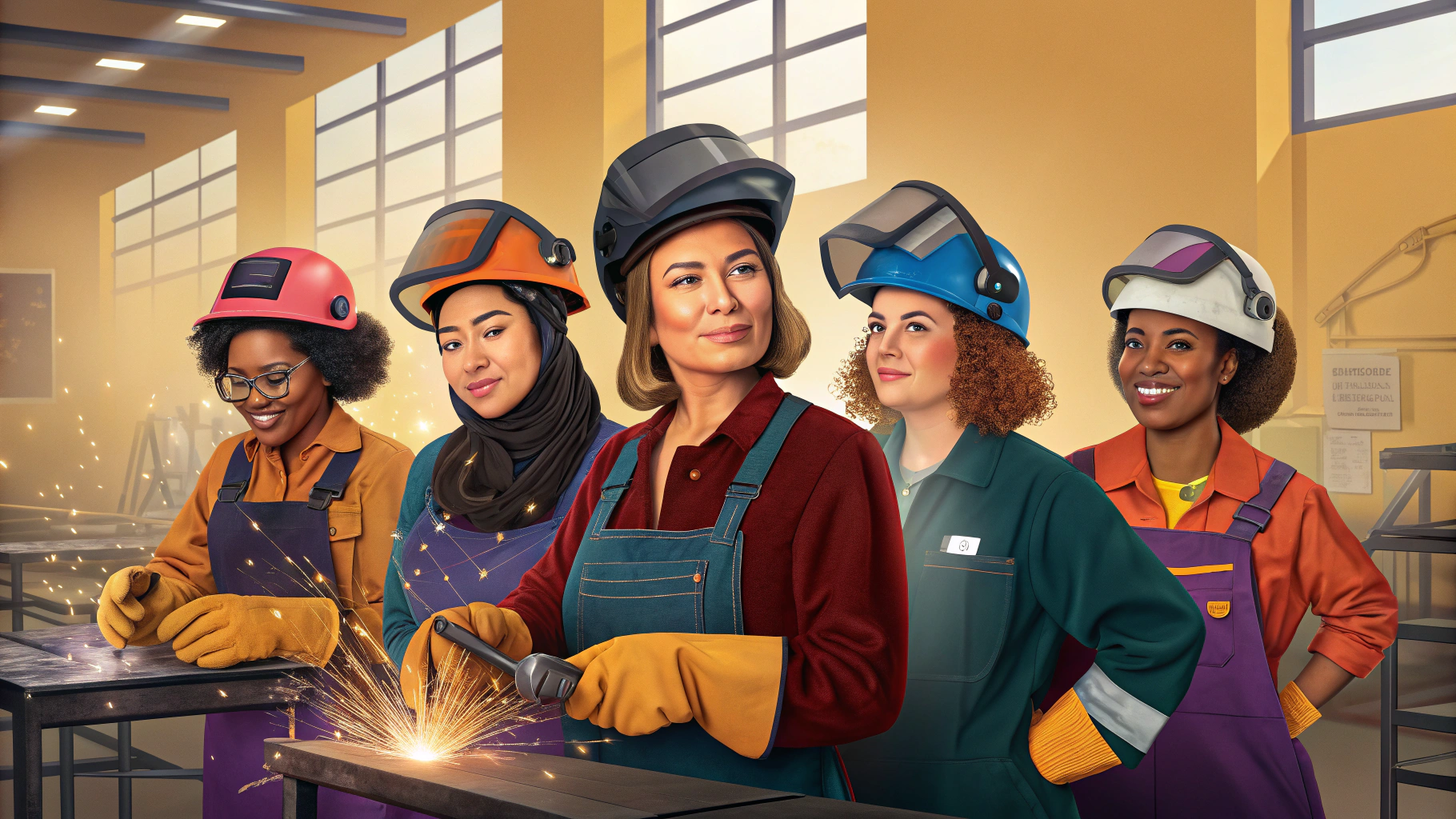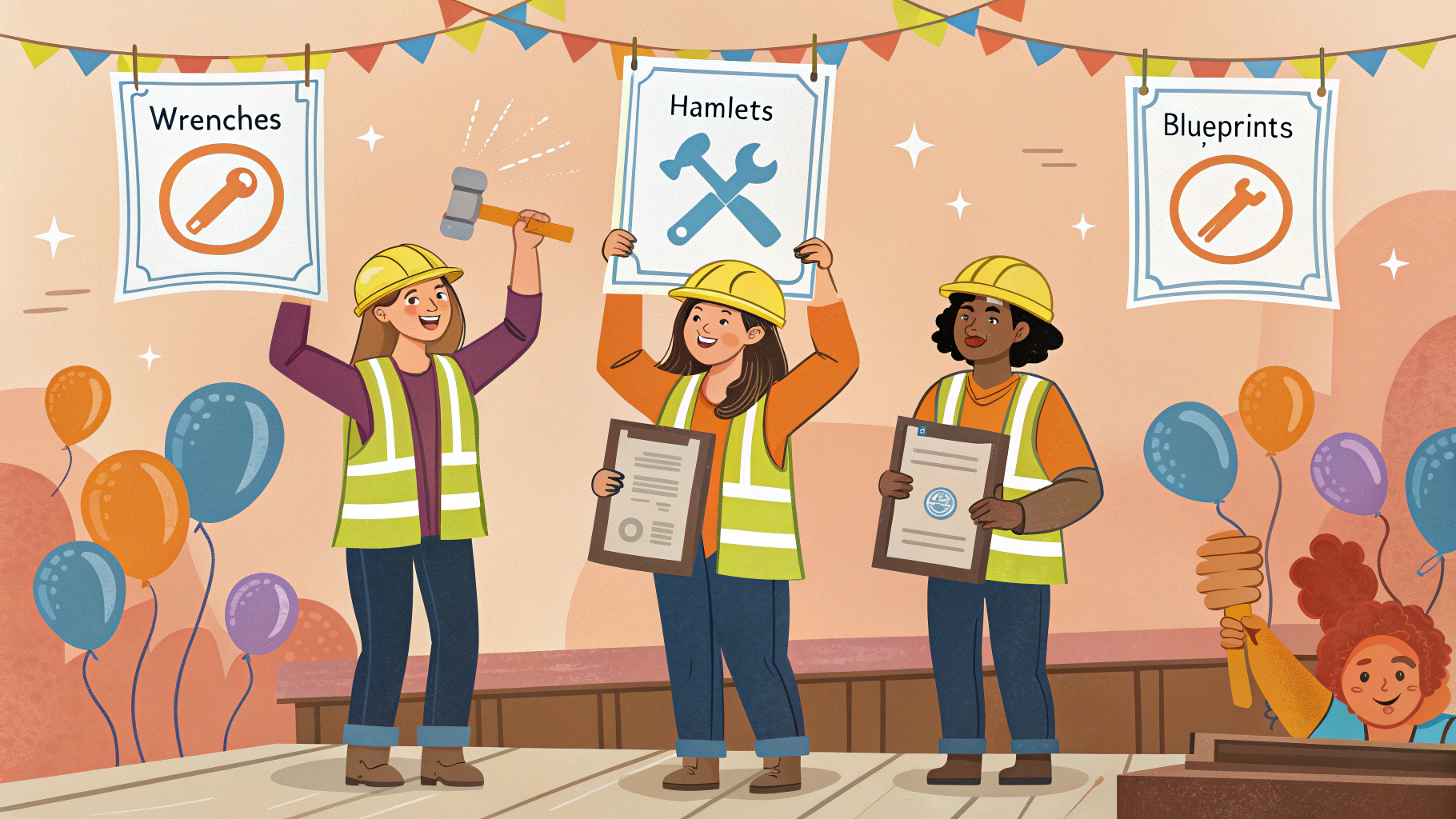As of 2023, women make up just 10.9% of construction workers and 3.6% of apprentices in these fields. It’s a stark reminder of the systemic barriers facing female tradesworkers 12. But beneath these numbers lies a real shift. Across the country, organizations focused on women in trades are changing the game with hands-on training programs, mentorship, and pushing for better policies. Take Sarah, a single mom from Phoenix. She completely turned her life around through Iowa Women in Trades' electrical program.
“They didn’t just teach me to wire circuits,” she says. “They taught me how to claim space in rooms where women rarely get heard.”

Essential Resources for Entry and Advancement
Many women face early roadblocks: 37% receive inadequate career guidance from schools, while 23% feel intimidated by male-dominated worksites 34. Specialized programs are bridging these gaps through hands-on training and community backing.
Oregon Tradeswomen’s Pathways to Success combines welding workshops with job-readiness coaching, while their RISE Up Oregon initiative partners with contractors to create harassment-free jobsites 5. In New York, Nontraditional Employment for Women (NEW) offers pre-apprenticeships in plumbing and carpentry paired with childcare assistance, a critical resource for mothers entering the field 65.

Vocational schools have also adapted. North American Trade Schools’ 18-month HVAC program reports a 89% job placement rate for female graduates, thanks to flexible evening classes and employer partnerships 8.
How Mentorship Transforms Careers
Mentorship launches careers for many women. Studies show tradeswomen with mentors are 2.3x more likely to stay in their field past the five-year mark 9.
Take Maria Gutierrez, a pipeline welder who credits her success to Ironworkers Union’s mentorship program.
“My mentor showed me how to handle the ‘casual’ sexism, like toolboxes mysteriously vanishing from my work area,” she recalls. “More importantly, she taught me to document everything and speak up.”

Programs like Women in Plumbing use a tag-team approach: apprentices shadow veterans on job sites while attending monthly salary negotiation workshops. This dual focus on technical and soft skills helps women like 22-year-old Aisha Patel secure raises 18% higher than non-mentored peers 10.
Overcoming Systemic Barriers
The reality remains harsh: 1 in 4 tradeswomen face regular sexual harassment, while 61% report being assigned less skilled tasks than male peers 3. Change requires accountability at every level.
Construction giant DPR Construction slashed female turnover by 40% after implementing anonymous harassment reporting and gender-neutral PPE, including safety harnesses designed for women’s bodies 4. Union-led campaigns like #MadamElectrician are also shifting perceptions, showcasing trades as viable careers with $60k+ earning potential 13.

Policy changes amplify these efforts. The Department of Labor’s Women in Apprenticeship grants funded 32 new childcare programs at union halls last year, directly addressing a top reason women leave the trades.
Vocational Training as a Gateway
Trade school enrollment among women has surged 30% since 2020, driven by programs that prioritize hands-on learning over theory 1415. At Los Angeles Trade-Tech College, the “Women Build Nations” cohort learns framing and electrical work by constructing tiny homes for homeless veterans, a project that’s placed 94% of participants into union apprenticeships 16.

High schools are catching on. Skills Canada’s “Girls GETT” program lets teens operate excavators and 3D printers during weekend workshops.
“I thought trades meant getting dirty,” admits 16-year-old participant Emily Zhou. “Now I’m applying for welding scholarships.”
Policy Reforms and Corporate Accountability
Government and industry leaders are finally stepping up:
-
WANTO Grants: Funded 45 new anti-bias training programs in 2024, helping contractors comply with updated OSHA harassment guidelines 1718
-
Bradford White Corporation: Invested $500k in 2025 to expand Women in Plumbing scholarships, covering tuition and tool costs for 30 apprentices 19
-
California’s SB 783: Requires all state-funded construction projects to have at least 15% female workers by 2028 17

The Road Ahead
Women's construction employment reached an all-time high in 2025, which is encouraging. But hitting record numbers doesn't mean we've solved the problem. There are still decades of old-school systems that need to change. Employers must adopt gender-inclusive hiring practices modeled by pioneers like DPR Construction. Schools need to partner with local unions on K-12 trades exposure programs. Most crucially, policymakers should expand proven initiatives like WANTO grants to fund mental health resources for women navigating hostile worksites.

The blueprint exists. As Maria Macias, the first female superintendent at a Denver solar farm, puts it:
“We’re not asking for special treatment. We’re demanding the tools millions of men already get.”
With robust women in trades resources and sustained advocacy, the next decade could finally see the jobsite gender gap close for good.


